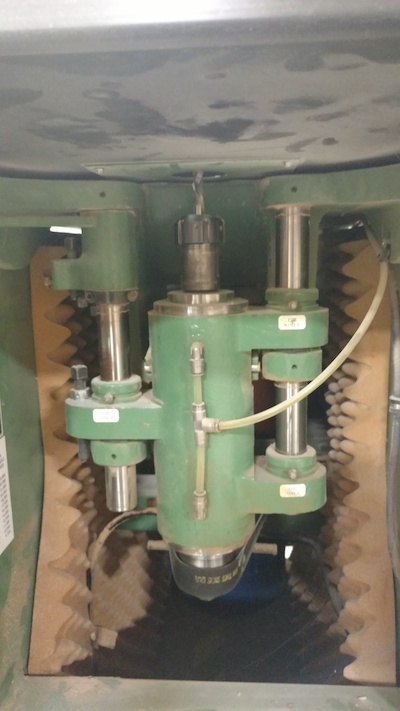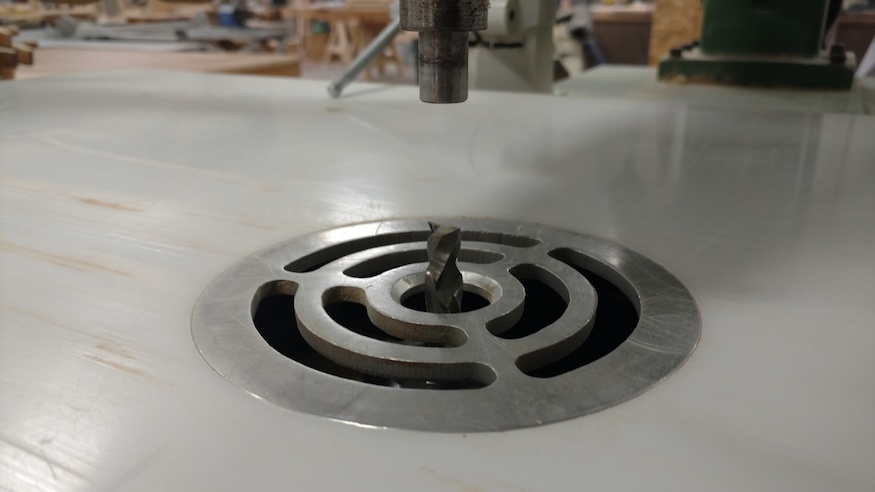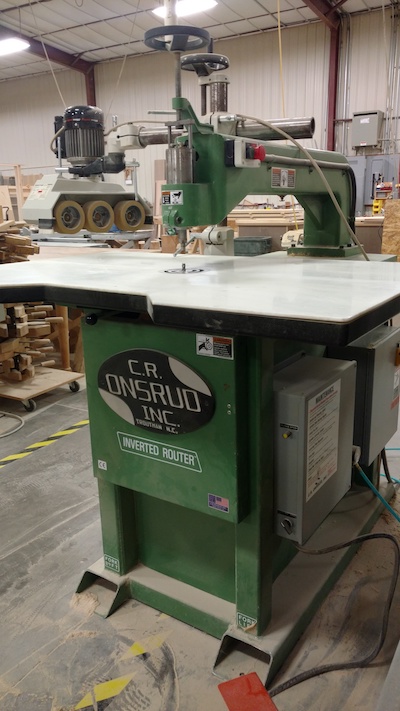A Little Bit About Onsrud
In 1915, Oscar Onsrud invented the first air powered, high speed spindle. This single, innovative accomplishment transformed the woodworking industry by the speed and efficiency in which we are able to manufacture goods. Beyond this incredible achievement, Onsrud credits and cherishes its founder’s innovative spirit for providing the foundation of what has become one of the best and, still, most cutting edge woodworking machinery companies in the world.
What is an Inverted Router?
An inverted router is a machine that performs tasks in woodworking that CNC machines also perform. They are great machines for templating and dadoing. The machine itself has a spindle that is mounted under a horizontal table. It is powered by a large motor that is usually connected to the spindle by a drive belt.
Typically, inverted routers have a horizontal arm that supports a vertically adjusting guide pin. The cutter on the inverted router is mounted underneath the material and cuts from the bottom, making this machine much safer to operate than a normal pin router.

The guide pin is often the diameter of common router bits which are easily interchangeable. Inverted routers, though still relatively “new” have paved the way for the newer CNC technology in woodworking, and have opened the doors for woodworkers to create nearly any product imaginable.

Main Parts Of An Inverted Router
- Base – The base is what supports the entire machine. It encloses and protects the motor and other moving parts from saw dust and damage.
- Table – The table sits on top of the base and provides a working surface for the materials that need to be cut.
- Spindle – The spindle holds the router bit and adjusts vertically.
- Cutter – Typically a router bit. This is what does all of the cutting
- Motor – The motor is powers the drive belt. This transfers power to the spindle, and turns the router bit.
- Upper Templating Arm – The templating arm sits above the table and supports the guide, or template.
- Pneumatic Adjustments – these move the spindle up and down according to the craftsman’s needs or job requirements.
Our Onsrud Inverted Router
Our inverted router was made in the late 1990’s. A woodworker can perform any task on the inverted router as he could on a CNC machine. The only difference is that it must be done manually on the inverted router.
We have used this machine for making dadoes, shaping edge, and cutting grooves. With the new CNC routers readily available to woodworkers today, inverted routers are not quite as relevant in woodworking as they used to be. However, it can still be a very useful machine in template work. For a craftsman that knows how to make templates, this machine is very fast and very accurate. Thus, it still has a place in our shop today.

Interested in learning more about the machines that we use each day? Subscribe to our blog’s RSS feed to keep up with the latest.